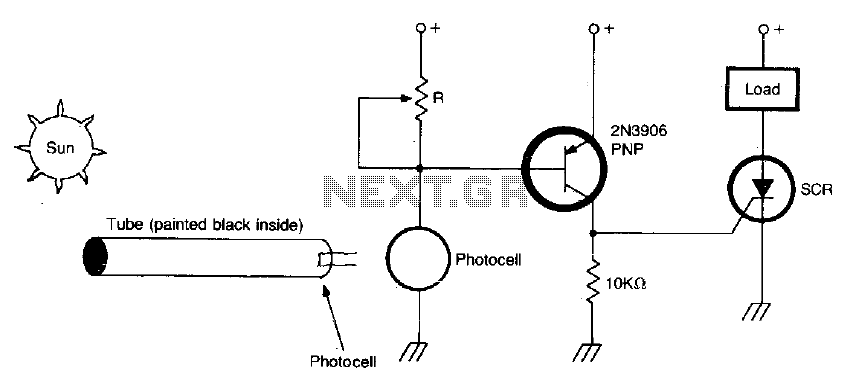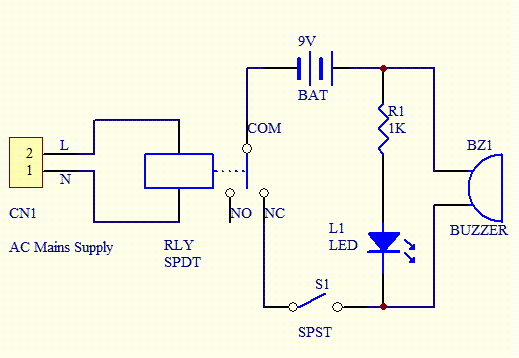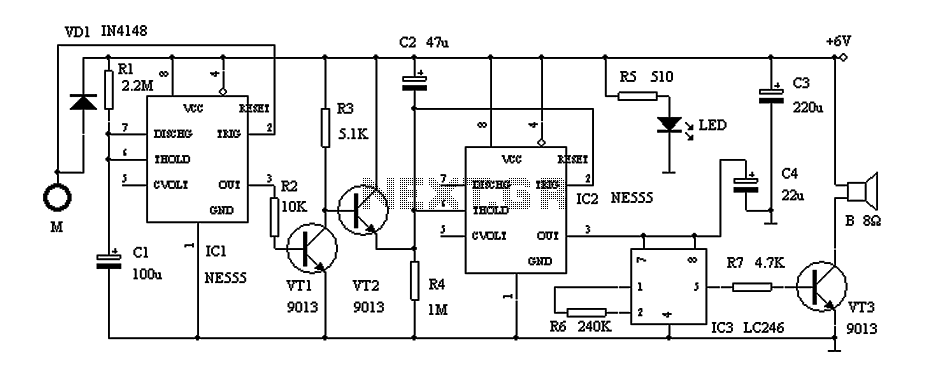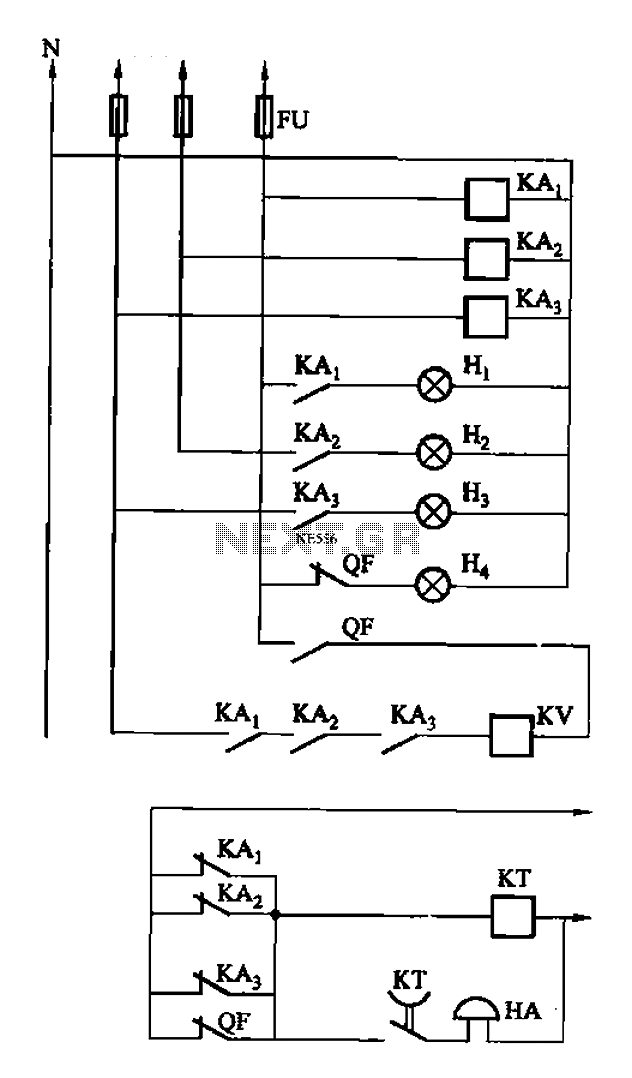
Sun-powered alarm

The circuit activates when light, specifically sunlight, strikes the photocell. A potentiometer, labeled R, adjusts the light level at which the alarm is triggered. Additionally, a painted tube, with a black interior, can be utilized on the photocell to focus on the sun.
The circuit utilizes a photocell (photoresistor) as the primary sensor to detect ambient light levels. When the intensity of sunlight reaches a predetermined threshold set by the potentiometer R, the circuit initiates an alarm signal. The photocell's resistance decreases with increasing light intensity, which in turn affects the voltage across the circuit.
The potentiometer R is a variable resistor that allows for fine-tuning of the light sensitivity. By adjusting this component, the user can define the specific light level at which the alarm will activate, ensuring that the circuit is responsive to the desired ambient conditions.
The inclusion of a painted tube, specifically designed with a black interior, serves to enhance the photocell's sensitivity to sunlight. This tube can help to concentrate the light entering the photocell, effectively increasing its response to sunlight while minimizing interference from surrounding light sources. The design of the tube is critical, as it must be positioned correctly to ensure optimal exposure to sunlight.
The overall circuit design may include additional components such as a transistor or relay to amplify the alarm signal, ensuring that it is loud enough to be heard in various environments. Power supply considerations should also be taken into account, with options for battery or solar power sources to enhance portability and efficiency.
In summary, this light-activated alarm circuit is a practical application of basic electronic principles, utilizing a photocell, potentiometer, and an optional focusing tube to create a responsive and adjustable alarm system.Circuit turns on when light (sunlight) strikes photocell. Potentiometer R sets light level at which the alarm sounds Painted tube (black on inside) may be used on photocell to aim at the sun.
The circuit utilizes a photocell (photoresistor) as the primary sensor to detect ambient light levels. When the intensity of sunlight reaches a predetermined threshold set by the potentiometer R, the circuit initiates an alarm signal. The photocell's resistance decreases with increasing light intensity, which in turn affects the voltage across the circuit.
The potentiometer R is a variable resistor that allows for fine-tuning of the light sensitivity. By adjusting this component, the user can define the specific light level at which the alarm will activate, ensuring that the circuit is responsive to the desired ambient conditions.
The inclusion of a painted tube, specifically designed with a black interior, serves to enhance the photocell's sensitivity to sunlight. This tube can help to concentrate the light entering the photocell, effectively increasing its response to sunlight while minimizing interference from surrounding light sources. The design of the tube is critical, as it must be positioned correctly to ensure optimal exposure to sunlight.
The overall circuit design may include additional components such as a transistor or relay to amplify the alarm signal, ensuring that it is loud enough to be heard in various environments. Power supply considerations should also be taken into account, with options for battery or solar power sources to enhance portability and efficiency.
In summary, this light-activated alarm circuit is a practical application of basic electronic principles, utilizing a photocell, potentiometer, and an optional focusing tube to create a responsive and adjustable alarm system.Circuit turns on when light (sunlight) strikes photocell. Potentiometer R sets light level at which the alarm sounds Painted tube (black on inside) may be used on photocell to aim at the sun.





